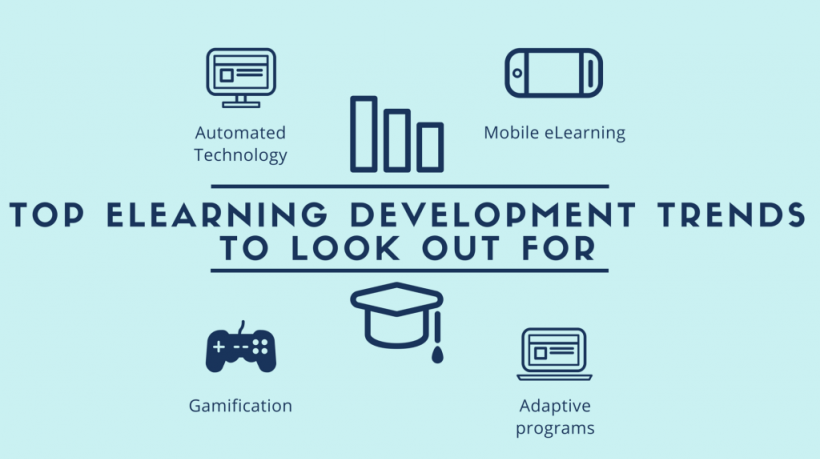The Evolving Trends Of The eLearning Industry
We have come too far from just reading texts and memorizing formulas to find answers. Now, we have digital solutions that provide more analytical and interactive approaches to teaching and helping learners remember. The credit goes to the transformation of the traditional learning environment into an eLearning environment. Since its origin, the eLearning industry has been evolving at a rapid pace thanks to the tech advancement happening around the world.
From adopting technologies like AI for the personalization of learning to using AR for a more interactive approach, the modern eLearning industry focuses on delivering an experience that requires interaction. That has given the popularity of eLearning a major boost. For instance, an eLearning growth report states that by 2026, the market size is expected to rise to $374 billion. Now that we know how massive the eLearning industry will be in the near future, we need to explore some trends that will drive this growth. Let’s have a look!
Trends That Drive Growth In eLearning Development
1. Gamification Of The Learning Curve
The eLearning industry is transforming the way people learn and making it more interesting and creative. Gamification is one such approach that lets eLearning experts go as creative as they want while, in parallel, teaching. Take Duolingo as an example. The language-learning platform offers features such as Match Madness. The gamification feature gives learners a timed challenge where they are supposed to match words and earn energy points. These energy points help players grow through levels and offer an interesting way to test learners’ progress.
2. Collaborative Learning And Socialization
Socializing is another characteristic that transforms the eLearning experience. The eLearning trend allows users to get their queries answered by other learners or experts from the community. Some platforms that have been promoting this idea include Quora. One can ask questions on Quora and other Quora users can answer them making it one of the best tools for community-based learning and surveys.
3. Personalized Learning Using AI And ML
Digitalization generates a massive amount of data. Using this data, Machine Learning systems find patterns and predict what learners might use or want to learn. It identifies factors such as learners’ weaknesses and strengths. AI then, recommends users with personalized learning materials that can help learners strengthen their weak parts of courses and improve their overall scores.
4. Microlearning For The Win
Microlearning, as the name refers, involves bite-sized learning materials. These learning materials can be quizzes, animations, videos, games, and other such categories of materials that explain any topic well.
5. Simulated Learning Environments
Simulated learning environments are replicas of real environments designed to provide learners with an almost realistic experience. This eLearning trend uses modern technologies like Augmented Reality and Virtual Reality combined with animation or filmmaking to demonstrate realistic environments.
6. AI Tutors For 24/7 Availability
AI tutors are becoming increasingly popular as a part of trends in eLearning development. These AI tutors are always available and can answer user questions 24/7. AI tutors also offer the ability of personalized learning which is another perk for their users. AI tutors are often available in the form of chatbots. GPT by OpenAI can also fall into this category due to its massive database and ability to deliver answers. GPT is also able to offer comprehensive explanations for each answer it delivers making it a perfect AI tutor for anybody that is interested in learning.
7. Blockchain For Data Security
Sometimes it gets critical to safeguard even the learning data. For instance, financial companies train their employees when initially onboard them using digital mediums. This training is done to explain their products and services better. In such cases, blockchain allows them to create a learning environment that is safer compared to traditional ones and can be accessed by those who are authorized on servers. Blockchain also blocks unauthorized access to learning materials making it easier for companies to keep their sensitive organizational data safe.
Wrapping Up
The captivating journey of the eLearning industry is adopting several new technologies and trends as it is growing. However, delivering a perfect eLearning experience requires harmonizing the balance between innovation and usability. Ultimately, your eLearning solution should be easiest to use, affordable, and innovative enough to keep learners engaged.
The above lists of eLearning development trends give you a brief insight into the transforming industry. However, it is critical to understand that these trends will go out of fashion as well. So if you are planning a software development project for eLearning solutions that remain trendy, it is critical that you also plan ways of upgrading it as time moves forward. Anyway, for now, hopefully, this comprehensive guide on evolving eLearning trends has given you some interesting ideas for your new software.









